Why you can trust TechRadar
We spend hours testing every product or service we review, so you can be sure you’re buying the best. Find out more about how we test.
When you think of big PlayStation games, The Last of Us, God of War, Uncharted, or Sony’s plethora of lauded franchises may pop into your head. Bend Studio’s Days Gone is probably an afterthought.
While many loved the open-world zombie survival game, which sold over eight million copies, it was released in 2019 to a mixed critical reception. According to a report by Bloomberg, despite being profitable, this and its lengthy development process resulted in Sony rejecting the studio’s pitch for a sequel in 2021.
Review info
Platform reviewed: PS5
Available on: PS5, PC (as Broken Road DLC)
Release Date: April 25, 2025
However, six years after Days Gone‘s release on PS4, there’s been a resurgence brewing. Not only is a Days Gone movie in the works, but Bend Studio has taken another bloody swing at bringing Days Gone to the hungry hordes with the release of Days Gone Remastered on PS5 – a good time to do it, given its zombie cousin The Last of Us‘ TV success.
Back in the saddle
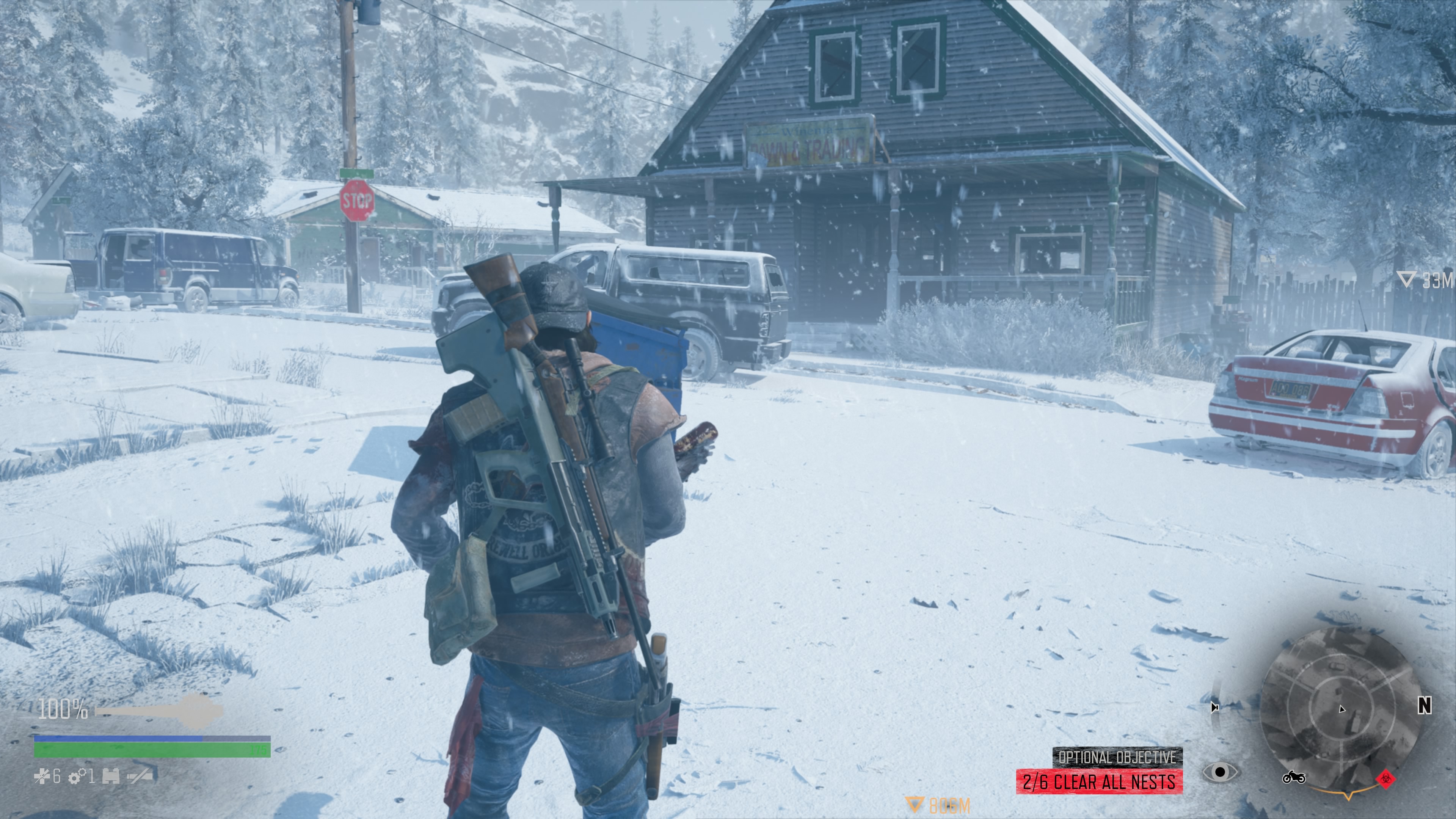
Days Gone Remastered certainly makes this survival adventure look better. Its enhanced lighting and shadow quality make the nights eerier and the sun-kissed days brighter and the improved graphical fidelity means the zombie-like Freakers are considerably more detailed.
Though, it’s hard to appreciate the realistic faces of those Freakers when you’re sprinting from this remaster’s impressively huge Hordes in the new Horde Assault mode, which offers a serious challenge for those who just want to kick zombie ass. If you’re a real glutton for punishment, you could always try the new Permadeath mode, which puts you back to the beginning of the game (or the second act) when you die.
The most welcome addition to this remaster, however, is the new accessibility features, which have become a staple of Sony’s first-party offerings in recent years. Alongside options to customize the game’s contrast, toggle on quicktime event autocompletion, remap your controller, and add UI narration, there are also options to adjust the game speed (giving you more time to react) and enable an audio cue that beeps when you’re near a collectible.
Best bit
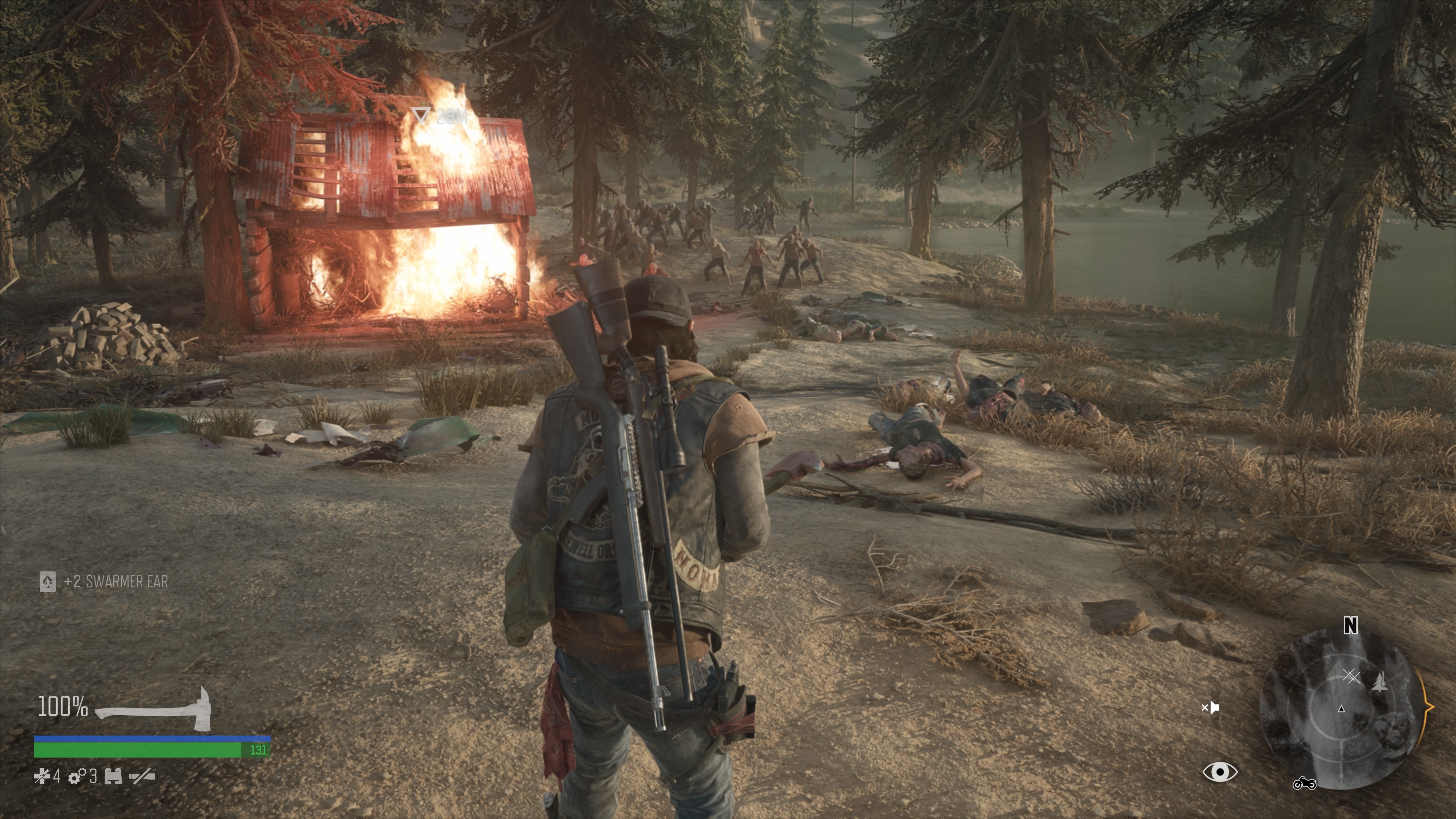
The Collectible Audio Cue is a dream come true for Platinum Trophy hunters. When enabled, you will hear beeps when you’re near a collectible. As you get closer to the collectible, the beeps get louder and faster. Essentially, it’s like playing the Hot and Cold game.
What this remaster cannot fix are the core issues some (including me) had with the original. The story is still tedious, with clunky pacing, and some cringeworthy, inauthentic dialogue. It’s like someone who watched Sons of Anarchy decided “this is what a biker would say.”
The missions also become very repetitive the more you play: go to the job giver, ride your chop-shop motorbike to the place where the baddies are, kill baddies, go back to the mission giver.
I had reservations about playing Days Gone again, but actually, I enjoyed it this time. At least, for a while. Sure, it’s pretty generic, and the story is nowhere near as gripping or well-told as The Last of Us or God of War, but there’s something satisfying about riding the roads, forests, and mountains of Oregon on a Frankenstein bike I’ve been working to buy parts for, feeling the subtle rumble of my bike through my DualSense Wireless Controller.
I tried to enjoy the ride, embrace the tedious, and not set my expectations too high – but even then, my enjoyment of Days Gone Remastered ran out of gas before the finish line.
Bugged the hell out
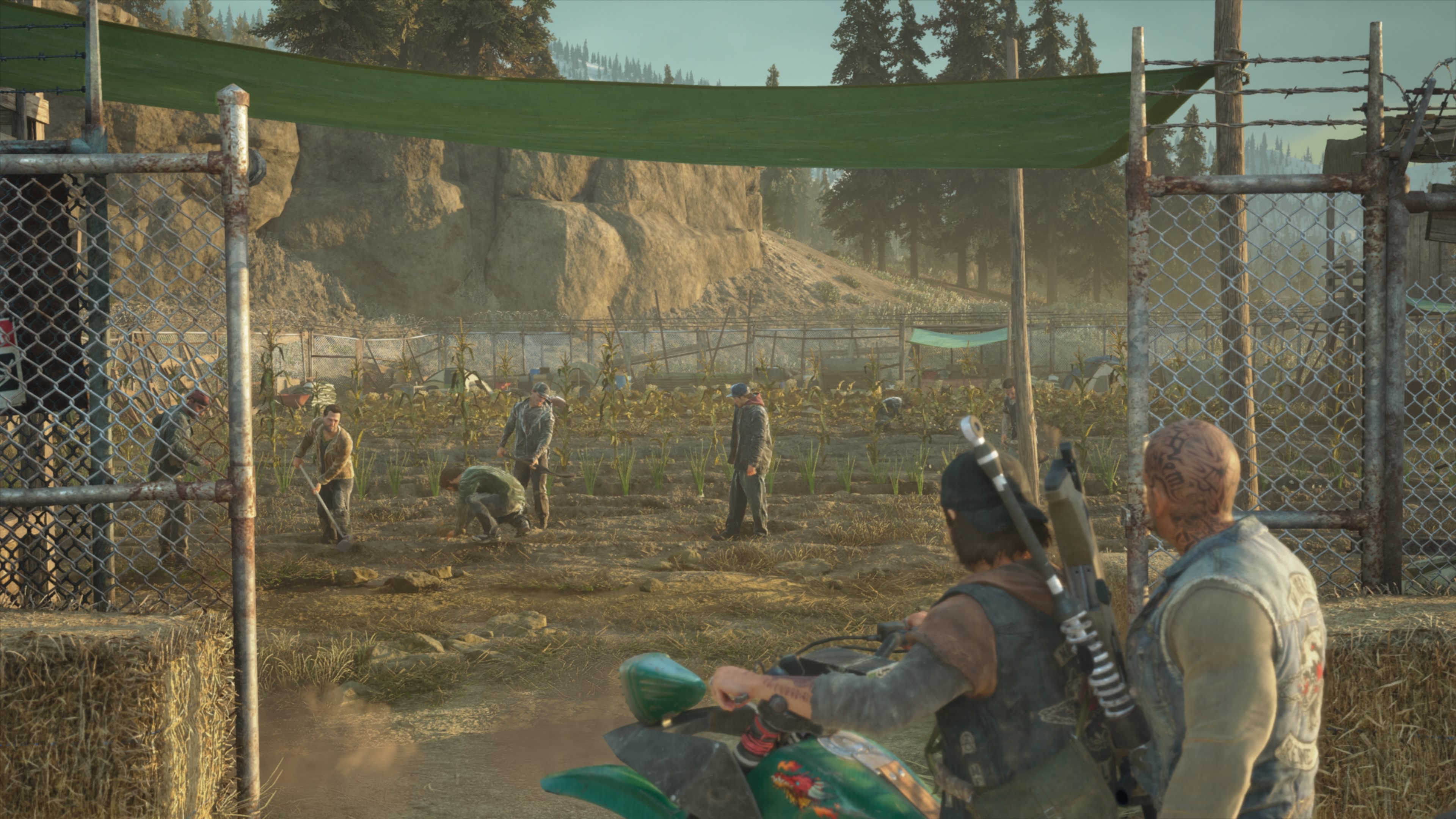
Days Gone Remastered begins with Mongrels MC member Deacon St. John desperately trying to get help for his wife, Sarah, who’s stabbed amidst a chaotic evacuation in post-apocalyptic Oregon. With not enough room in the helicopter to take him and his best pal, Boozer, Deacon opts to stay with the “Boozeman” and regroup with Sarah later.
We then fast forward two years, and Boozer and Deacon are Drifters, outlaw bikers running jobs for nearby (somewhat questionable) camp leaders to make credits and survive in “The Shit.” There’s no sign of Sarah, but as you progress, a picture of what happened to her and how she and Deac got together becomes clearer.
Uncovering the story of Deacon and Sarah should be heart-warming, and at times it is, but the story’s pacing and the many other story threads mean it gets a bit lost and doesn’t get room to breathe. This isn’t helped by the awkward writing, which can be downright cringeworthy and boring. The story does become more interesting as you progress, but often it feels like a slog, and the structure is inconsistent.
What’s more, you’re constantly bombarded with radio calls from others while riding, reminding you of what you’re doing and repeating the same information in different ways. It ruins the joy of exploring the world when Boozer’s constantly calling you up like a helicopter mom to ask what you’ve been up to.
It’s a shame because the world is beautiful. The enhanced graphical fidelity means the flora and fauna of Oregon’s forests, mountains, and lakes look much better than ever before. The nights are darker, too, thanks to enhanced lighting, which makes it particularly eerie when exploring abandoned houses and shacks at night, praying a horde doesn’t descend upon you.
When the day comes, the blazing sun peaks around the mountains, casting realistic shadows through the trees and making you hope Deacon’s got some sunscreen in his inventory. More impressive still is the rain and snow, which impact your riding and vision (and encourage more Freakers), but the snow flurries and rainstorms are so immersive that you can let that go.
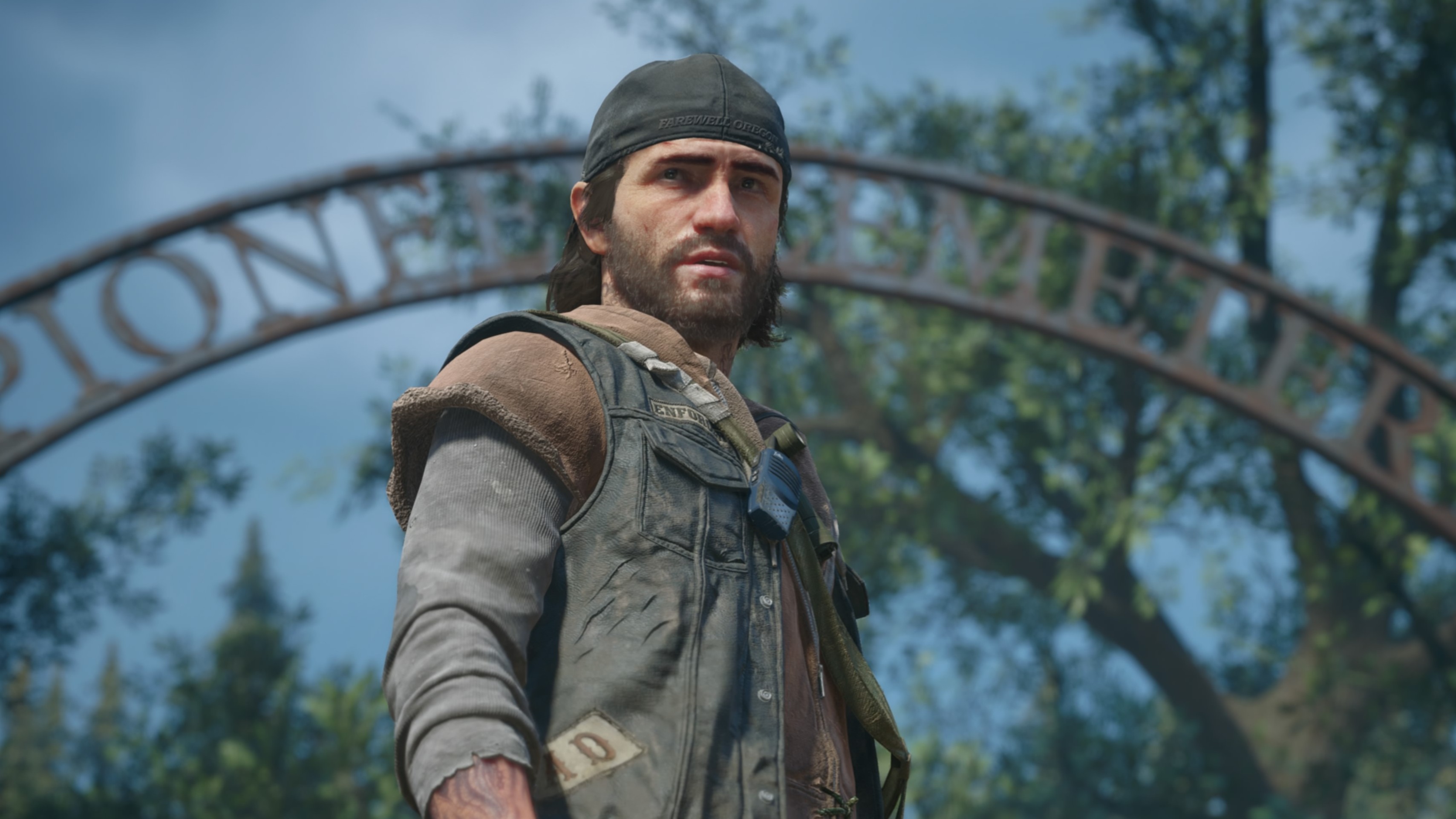
While the map is big, it’s manageable and full of (mostly) abandoned houses, caves, gas stations, and more to investigate and collectibles to find. Exploration provides some relief from the repetitive missions, which become particularly frustrating the further into the game you get. Many of those aforementioned radio calls are camp leaders asking you to drop by to pick up a job, which typically involves hunting down someone, clearing a Marauder or Ripper camp, or getting rid of Freakers holed up somewhere.
Initially, these missions feel like they have a story purpose, but eventually, it feels like a violent game of fetch. The main story missions can be similar, but usually have more depth to them or task you with sneaking and not hurting anyone. You learn more about the character you’re with and maybe visit a new area, but they can seriously drag on.
The sluggish pacing of some of these quests is frustrating, especially when you have to just walk with a character or ride with them as they talk for several minutes. While some of what they say provides context and helps with character development, it feels like you’re a hostage being force-fed background; it’s shoehorned information that could be integrated more naturally.
The main issue is that it doesn’t feel like there’s an overarching story here. There are lots of quest lines, but it’s unclear if Days Gone is mainly about Sarah, the camps and their survival, or Deacon himself. That lack of direction means it can feel like you’re floating in the wind at times, unsure of what your actual aim is, except for riding all over the map, completing jobs, and trying to align your moral compass.
Riding the open road
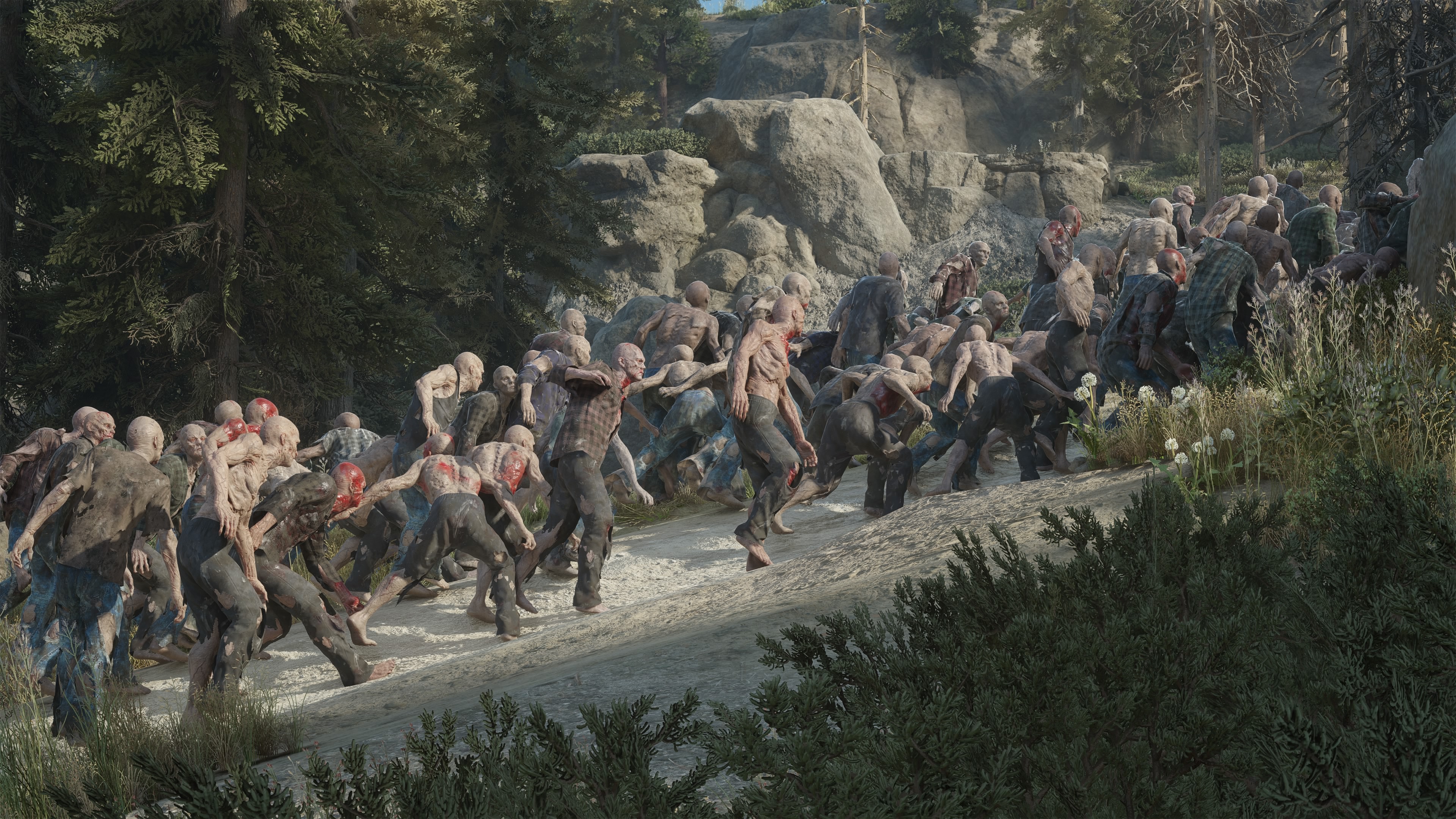
While the story is lacklustre, Days Gone Remastered‘s combat is thoroughly satisfying. There are plenty of weapons and skills to unlock to improve your combat capabilities, but there’s nothing quite like embedding an axe (or any hand-crafted melee weapon) in a Freaker’s head, or burning them to cinders with a Molotov.
The types of Freakers don’t vary greatly; you mainly deal with scrambling Swarmers who become bounty fodder as you progress, or savage marauders and Rippers.
The real challenge comes in taking out Hordes. These huge groups of Swarmers work as one entity, and there’s nothing like the pure fear (and adrenaline) of attracting one’s attention and then legging while the brutal mass chases you down. Hordes are Days Gone‘s niche, and thanks to the remaster’s Horde Assault mode, you can take on even bigger ones.
The Horde Assault mode tasks you with gaining a set amount of points to unlock new maps and increase your level. Increased levels give you access to Injectors with negative or positive effects: positive ones help you in the game, but negatively impact your final score, while negative ones do the opposite.
Once let loose on the map, you can take out fodder Swarmers and other Freakers to gain points, allowing you to unlock supply cases to get better supplies and weapons. In the corner, however, is a timer that counts down to when a Horde is unleashed on you, so you better be ready. Taking out Hordes gives you more points, but becomes increasingly difficult over time, and these Hordes are way bigger than the ones in the story mode.
If you’re after a challenge and want to skip the biker runs, Horde Assault will satiate you. If you’re a true sadist, you can always try the story mode’s Permadeath mode too, which puts you back to the start of the game (or the second act) if Deacon dies.
It couldn’t be that easy
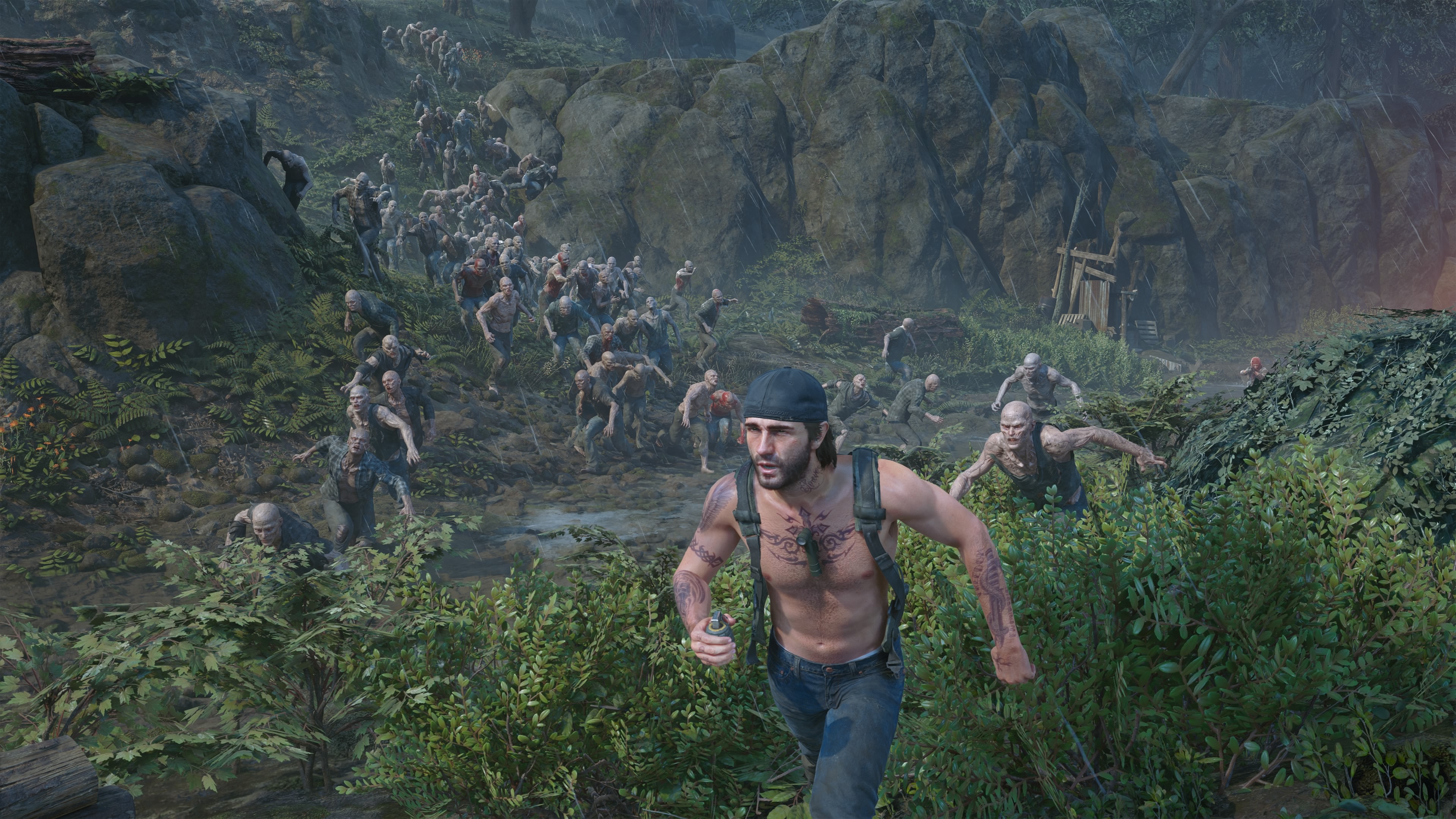
Days Gone Remastered comes with two visual options: Quality mode and Performance mode. Performance mode means the game can run at up to 60fps (as opposed to the 30fps of the PS4 version), at the cost of some visual quality.
Quality Mode allows for greater resolution (up to 4K), but at the cost of framerate. Both run well, with the Quality mode better suited to exploring and the Performance mode worth putting on during combat, especially with Hordes.
Days Gone Remastered isn’t always a smooth ride, however. The game has some serious audio balance issues, even with audio settings adjusted for my setup. NPCs’ voices are muffled and quiet, or dialogue is almost entirely drowned out by background noise. This is particularly noticeable early in the game and when rescuing hostages, but occurs during some cutscenes, too. I’m not the only one who has had this issue, either.
Other, minor, but annoying bugs include Deacon and his bike falling through hills and his struggles to line up with and talk to an NPC when you hold Square as instructed.
The DualSense Wireless Controller compatibility, however, is pretty good. I enjoyed the subtle implementation of haptic feedback from the DualSense when riding my bike and the varying resistance of the adaptive triggers, which allow for more control over acceleration.
What I found most useful, however, is the ability to swipe the touchpad to easily open menus and the map. I just wish it were as easy to navigate the crafting/quick menu on the go, as it can be fiddly, especially in combat.
Should I play Days Gone Remastered?
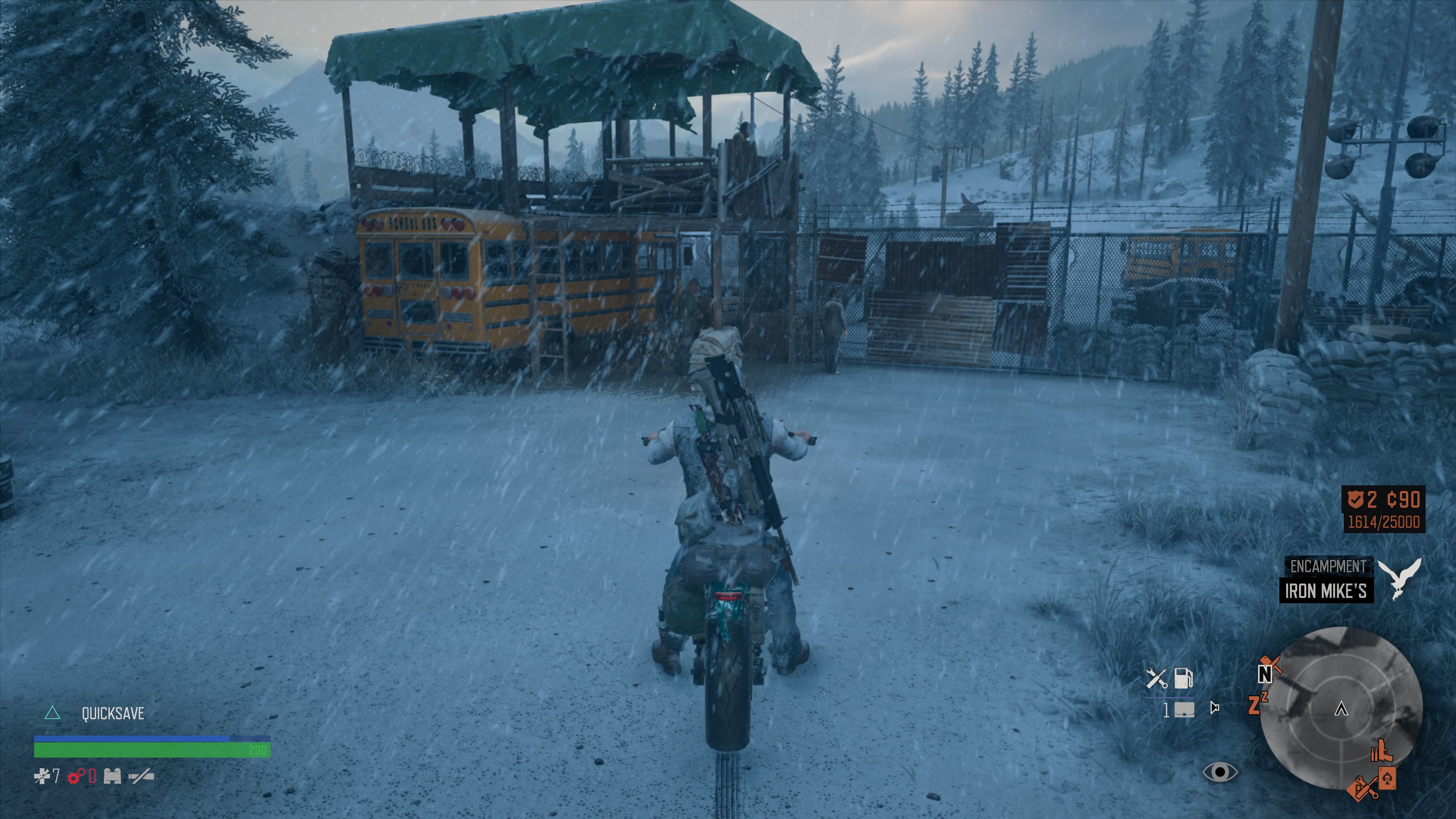
Play it if…
Don’t play it if…
Accessibility
Days Gone Remastered boasts a heap of accessibility options that weren’t available in the original.
Some highlights include a High Contrast mode, the ability to adjust Game Speed (a huge help with Hordes), UI Narration, subtitle customization, controller remapping, a collectible audio cue, and a field of view slider.
During this review, I had a wrist and thumb injury, so I found several of the QT event options particularly helpful. I set button-bashing QT events to a hold option instead, and enabled the auto-complete QT events option when needed.
How I reviewed Days Gone Remastered
I played Days Gone Remastered for over 35 hours on PlayStation 5 on a Samsung Q80T QLED TV using the DualSense Wireless Controller.
During that time, I played most of the main story campaign, completed several side jobs and quests, and spent some time with the Horde Assault Mode.
At launch, I played 2019’s Days Gone, so I was able to make comparisons between the original game and this remaster.
First reviewed May 2025







Leave a Comment
Your email address will not be published. Required fields are marked *